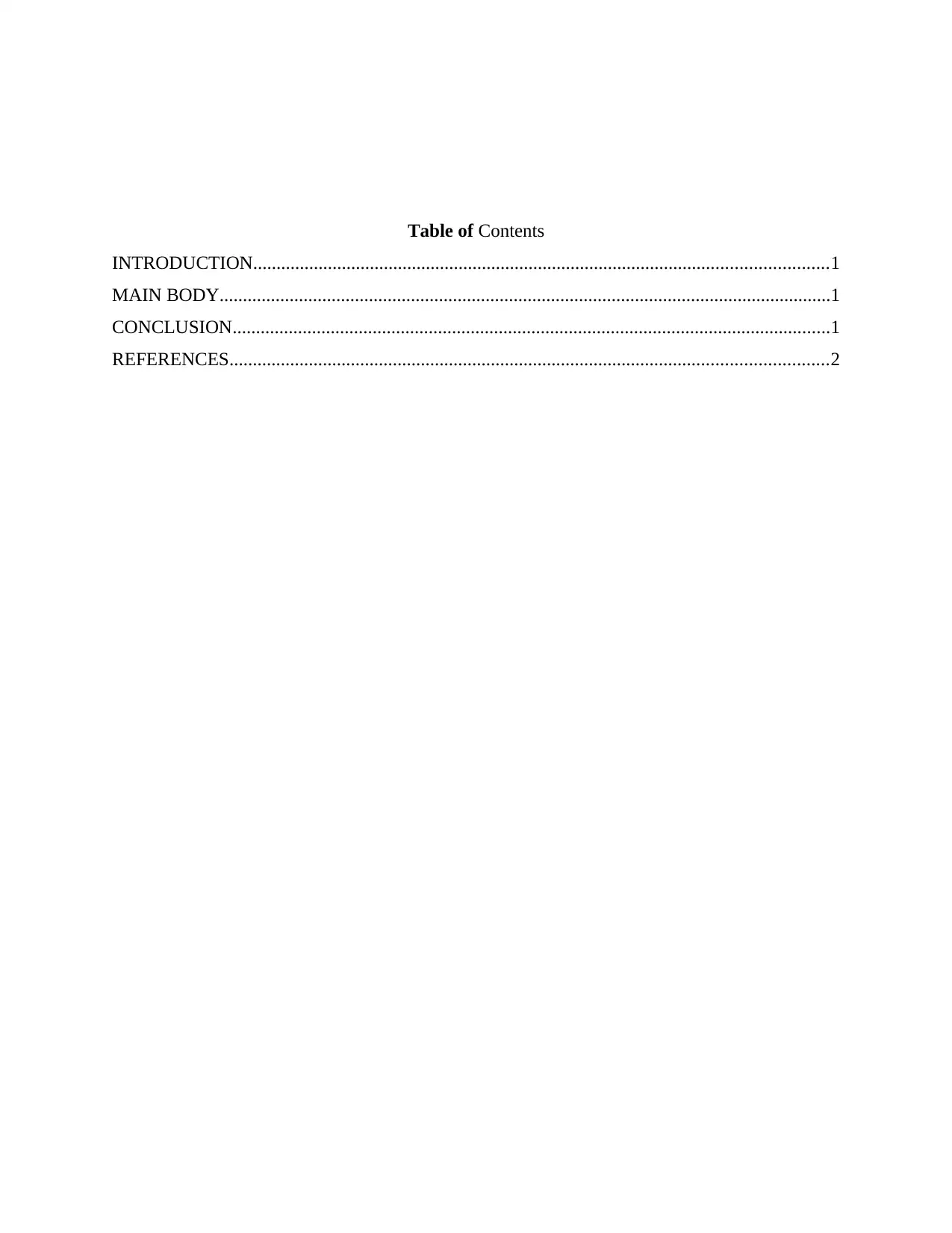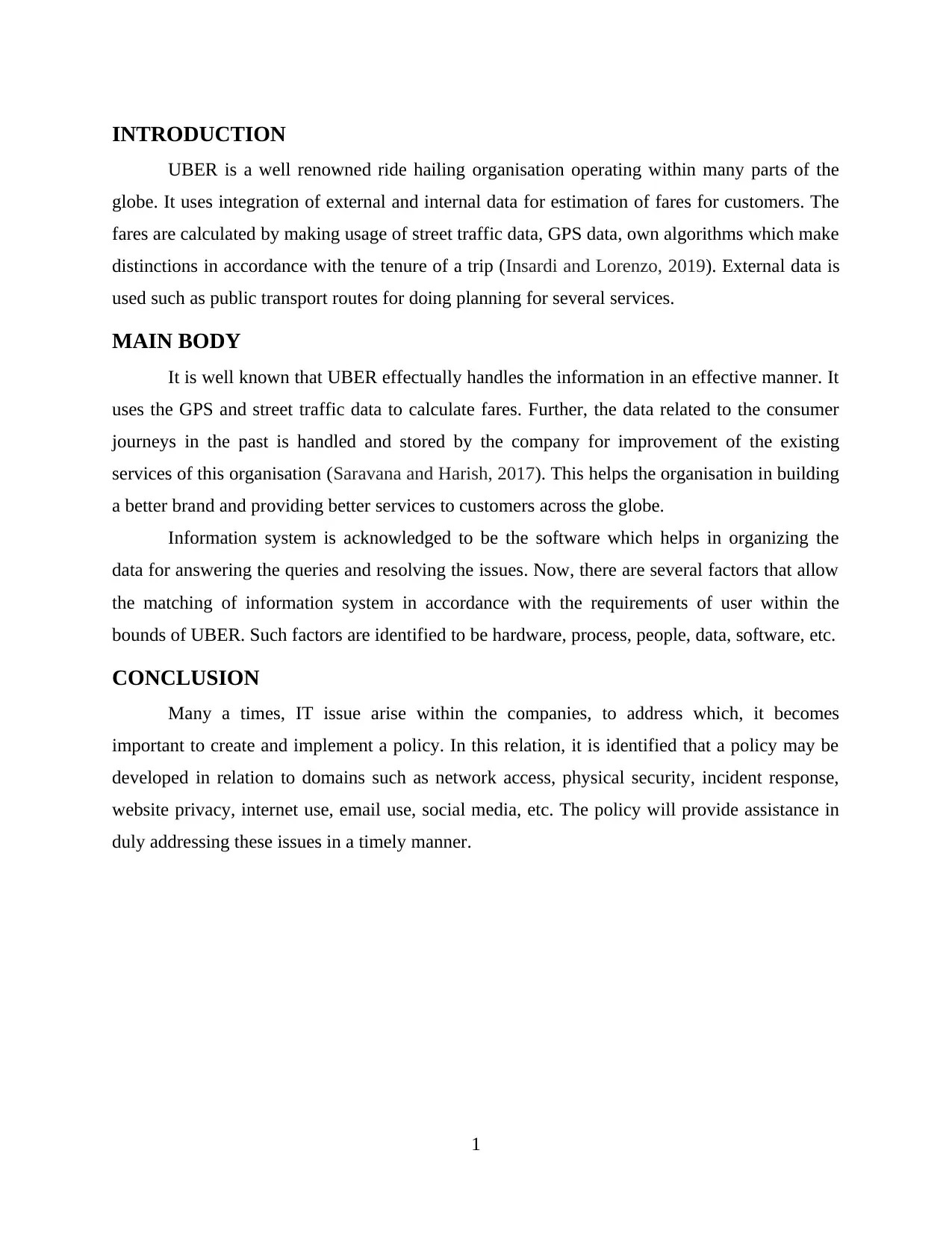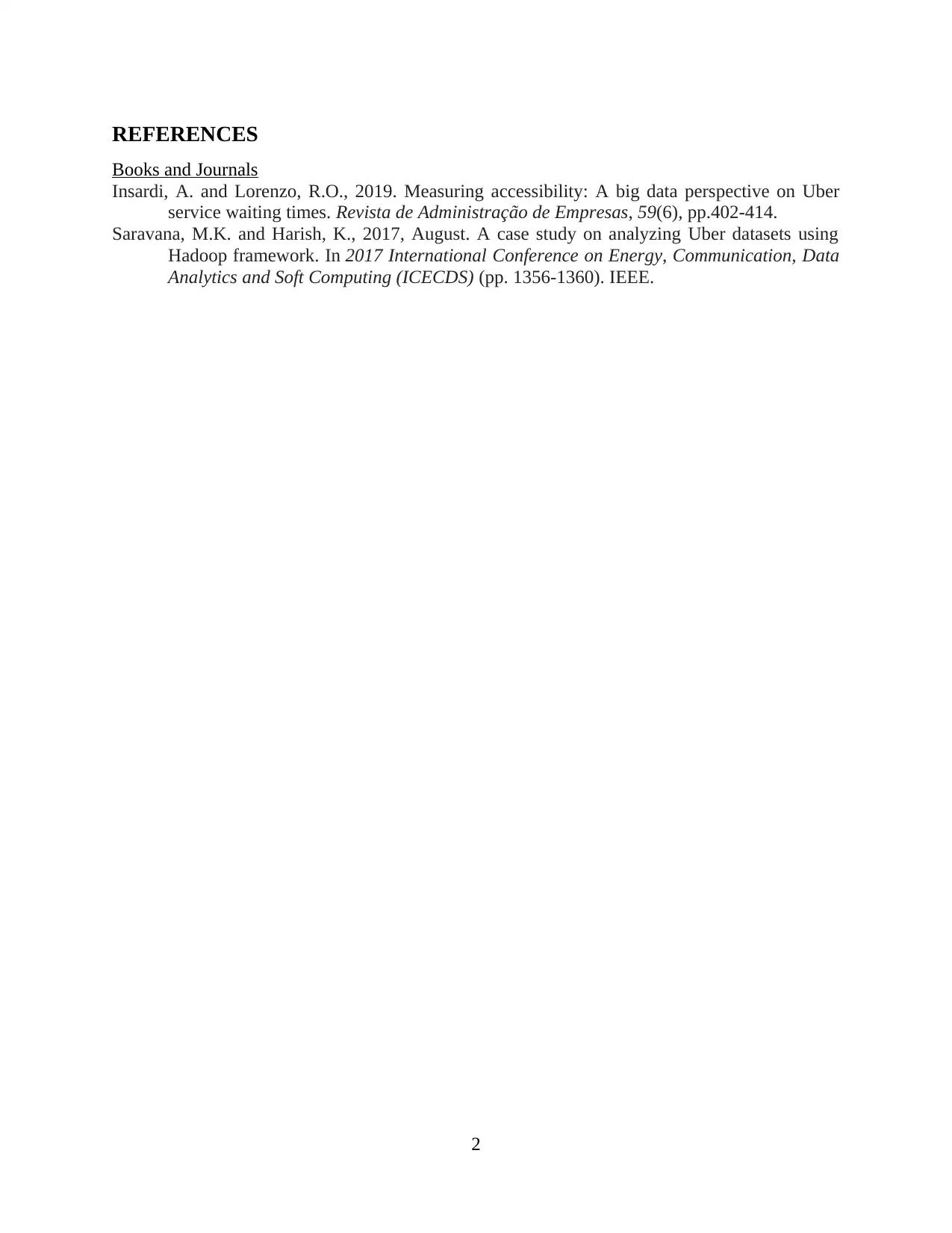Uber's Data Strategy: Information Systems and Policy Analysis
VerifiedAdded on 2023/01/09
|4
|426
|83
Report
AI Summary
This report provides an overview of Uber's information systems and data handling practices. It highlights how Uber integrates external and internal data, such as GPS and street traffic data, to estimate fares and improve services. The company effectively manages consumer journey data to enhance its brand and customer experience. The report also touches upon the importance of establishing IT policies to address potential issues related to network access, security, and online conduct. The information system, comprising hardware, processes, people, data, and software, is crucial for organizing data, answering queries, and resolving issues within Uber. Desklib provides students access to similar solved assignments and study tools.
1 out of 4









![[object Object]](/_next/static/media/star-bottom.7253800d.svg)